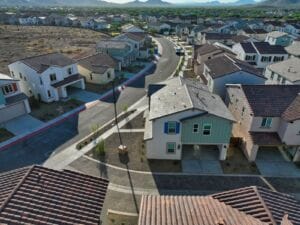Dynamic growth in population and increased consumer spending are factors driving improvement in the Greater Phoenix retail real estate market, according to a report from Colliers. During third quarter, vacancy dropped to 7.2 percent, reaching pre-pandemic 2019 levels.
Retail consumer spending in Greater Phoenix increased by 18.6 percent at the end of September, compared to January 2020. Revenue generated by retail sales tax in the City of Phoenix was up 19 percent from a year earlier and up 29 percent from the three-year average.
Vacancy of retail space dropped 20 basis points during third quarter while net absorption climbed to 286,386 square feet. The Downtown submarket experienced the largest decrease in vacancy both over-the-quarter and year-over-year, declining to 6.6 percent. West Valley posts the smallest vacancy for the third consecutive quarter, posting just 4.9 percent. North Phoenix has the highest vacancy with 9.7 percent, marking a 60 basis point increase year-over year, but a 70 basis point decrease over-the-quarter.
READ ALSO: Here’s how supply chain disruptions are impacting Phoenix businesses
Net absorption outpaced second quarter and brought the year-to-date total to 786,071 square feet. Year-to-date net absorption has surpassed the total posted in 2019. The number of new transactions signed during third quarter was 18 percent higher than the same time last year, which strongly indicates Phoenix’ recovery from the pandemic. The tenant Mind 24/7 was very active during third quarter, signing three new leases throughout the metropolitan area. The company signed its largest transaction in September for a former LA Fitness property at 10046 N. Metro Parkway.
Rental rates continued to grow, rising 2.4 percent year-over-year to finish third quarter at an average of $14.94 per square foot. Every submarket, with the exception of the Airport Area, experienced year-over-year increases. Scottsdale and West Valley submarkets posted the largest year-over-year rental rate increases, jumping 10.5 and 9.6 percent, respectively. Scottsdale had the largest decrease in rates during 2020 and has bounced back after being impacted by the pandemic. The Scottsdale submarket maintains the highest rental rates, finishing third quarter at $23.98 per square foot.
Construction of new retail developments decreased during third quarter with just 66,910 square feet completed and added to inventory. This was the lowest amount of new deliveries in a single quarter in the past five years. During 2021 the market has added just 496,386 square feet of new deliveries. Currently, another 473,184 square feet are under construction. New construction is heavily focused in the East Valley and West Valley, which comprise 69 percent of total construction. New projects are 92 percent pre-leased, which shows that developers are not pursuing speculative projects without heavy tenant commitment.
Investment sales of retail properties have improved significantly. Volume of sales in third quarter hit a level equivalent to 56 percent of entire 2020 performance. Third quarter brought $510 million in retail property sales, which created a year-to-date sales volume of $1.147 billion. Third quarter sales volume was 191 percent higher than a year ago. The median price paid for square foot reached $204. The largest transaction during third quarter was the $50.2 million sale of Crossroads Towne Center, a 245m960-square-foot shopping center at the corner of Gilbert Road and Loop 202.
The forecast for retail real estate is very optimistic. The population continues to grow as people relocate to Arizona. The metro area has become a focal point for new restaurant concepts and retail innovations as the population expands.




